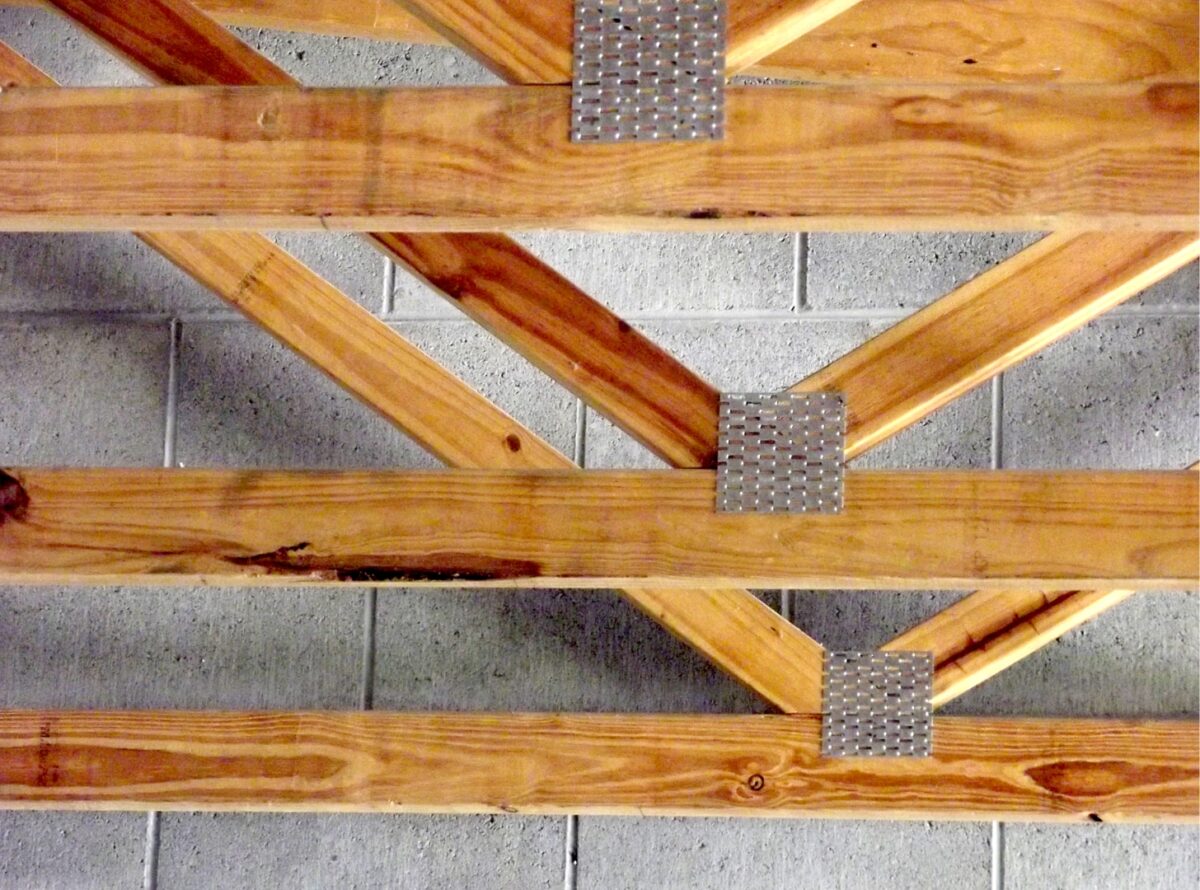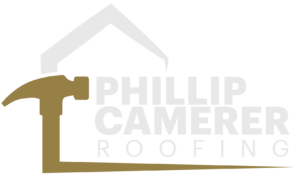Truss System of A Home’s Roof: Anatomy, King Truss, and Queen Truss

Posted on January 31, 2023 by Phillip Camerer
The roof truss is an essential component of any roof structure, providing the necessary support and shape to a roof. There are many roof trusses, each with a unique design and feature.
By the end of this blog, you’ll have a comprehensive understanding of the basics of your home’s roof truss. Including what is the difference between a king truss and a queen truss. Afterward, you will find it easier to understand how these structures work together to form a solid and reliable roof over your family’s heads.
The parts that make up a primary roof truss include:
- Top chord
- Bottom chord
- Web members
- Diagonals
- Struts
- Purlins
- Girts
- Rafters
Two different support beams make up the interior of a truss: the king truss and the queen truss. These two beams are what we’ll focus our topic on today. Then next blog, we will take a deeper look at each fundamental element outlined above.
Knowing what each part does will help you make informed decisions regarding designing or repairing your roof. Additionally, understanding how these parts work together will ensure that your roof gets built correctly and safely.
Roofing Truss Anatomy
The anatomy of a primary roof truss is composed of several essential components. The rafter is the most visible part of the truss, and it is a diagonal member that meets at the apex to support the roof deck and its loads.
Underpurlins are horizontal beams supported by posts and used to help the mid-span of rafters for longer spans. Struts are also diagonal members of the truss with compressive forces acting on them, providing additional rigidity and strength to the structure.
Finally, ridge beams are horizontal beams that support the ends of rafters at the ridge. These components work together to form a robust and stable roof structure that can withstand heavy loads and extreme weather conditions.
King Truss
The king truss adds increased strength to diagonal beams. It is simply post-roof support placed beneath the apex of the top chord beams—the most widely used truss design in construction.
Composed of a central vertical post, known as the king post, two rafters that meet at the apex, and a tie beam, or horizontal base. That truss design often gets used for simple roof structures such as sheds, porches, and garages.
The king post itself supports the two rafters, forming an inverted V-shape at the top of the truss. The tie beam provides additional stability to the structure by connecting the two rafters at the base.
That connection helps distribute weight evenly across both sides of the truss and prevents collapses. In addition, the king truss gets used when creating more complex roof designs with multiple angles and slopes.
Queen Truss
The queen truss aids in providing extra stability to vertical beams that support the roof structure. It consists of several parts, each with a purpose.
The ridge board is a non-structural member that connects the rafters and provides a resting place. The straining beam is a short piece of lumber that keeps the ends of struts and rafters in place.
Common rafters, also known as minor rafters, are smaller than principal or primary rafters and provide additional support for the roof structure. Purlin cleats are iron strips attached to purlins that help keep them in place. Wall plates are pieces of lumber laid horizontally on walls to support the rafter structure. Finally, support walls get used as load-bearing walls that provide structural support to the entire roof system.
All these components work concurrently to create a strong, more stable roof structure that can withstand heavy loads and extreme weather conditions. Proper installation and maintenance of these parts are essential for ensuring the longevity and safety of your home’s roofing system.
When installing or replacing any part of your queen truss, it’s essential to consult an experienced roofing professional who can ensure everything gets done correctly and safely.
Call A Professional Roofing Contractor
With 20 years of roofing experience throughout Joplin, Missouri, and the four-state area, no one can help build or repair your roof better.
Request a consult today by filling out an online form for the team at Phillip Camerer or call (417) 451-5479 today! No matter what roofing challenges you may be facing, let the team at Phillip Camerer Roofing bear the load of your roofing project.
